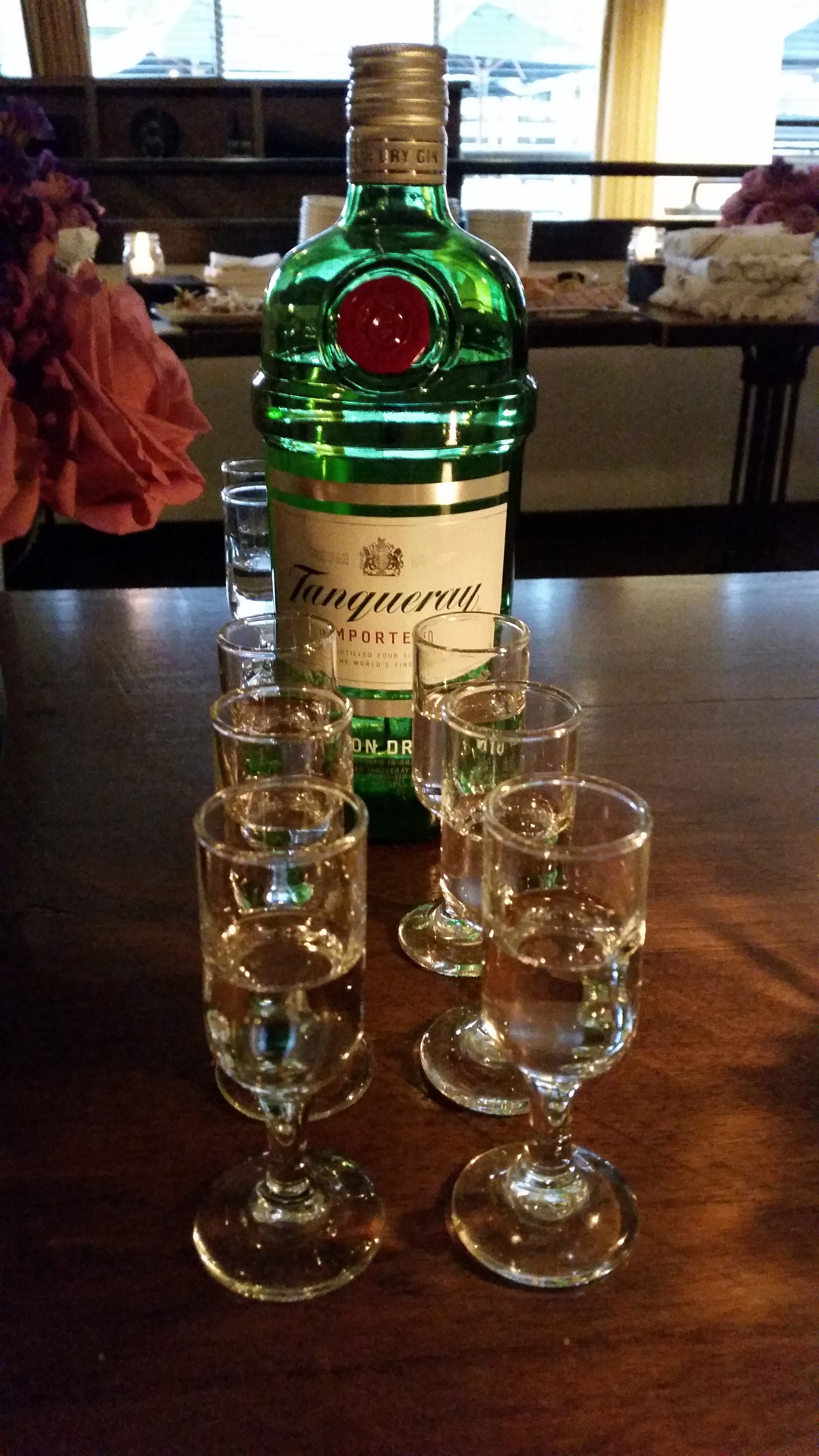If you’re a gin drinker, this is a good time to be alive. Not only has the herbal spirit enjoyed a global surge in popularity in recent years, but the advent of craft distilling has introduced a stunning array of small-batch gins to the market. With so many products to choose from, it’s almost hard to remember the time when our choices were limited to just a handful of major labels. Of course, those long-established brands still dominate the market, unthreatened by the multitude of tiny upstarts. But some of the big guys seem to have taken notice of gin drinkers’ evolving tastes. Gordon’s gin, one of the oldest gins in the world and still the best selling, in recent years introduced a cucumber gin and an elderflower gin. Another titan, Beefeater, began offering a barrel-aged gin a couple of years ago.
And then there’s Tanqueray – the sexiest of traditional London dry gins and the subject of this week’s post.
With roots dating back to the early 19th century, Tanqueray is among the oldest and most renowned gin brands on the planet. I’ve always found it to be the most alluring, as well. Something about that iconic green bottle, with its waxy red seal, commands respect as it evokes a sense of mystery.
As timeless as Tanqueray London Dry may be, the brand remains open to a little experimentation. The venerable distiller has debuted a series of limited-release gins in the past few years, beginning with Tanqueray Malacca, a spiced gin, in 2013. Tanqueray Old Tom followed a year later. And just last month, the gin distiller unveiled its newest variation – Tanqueray Bloomsbury.
It’s not quite accurate to call Bloomsbury “new.” The gin draws its inspiration from a recipe by Charles Waugh Tanqueray, son of founder Charles Tanqueray, that dates back to 1880. The name derives from Bloomsbury, England, the London district that the Tanqueray distillery once called home. Whereas Tanqueray’s London Dry employs four botanicals in its recipe, Bloomsbury uses five – a special “Tuscan juniper,” angelica, coriander, winter savoury, and cassia bark.
Before I tried the new variation, several people remarked to me that Tanqueray Bloomsbury is “very juniper-forward” – a characterization I found somewhat amusing. The juniper berry is what gives gin its distinctive, pine-like flavor, and that quality is prominent in all English gins. So describing Bloomsbury as “juniper forward” seems kind of like describing a steak sandwich as “meat forward.” But I got a chance to try it out for myself this past week, when brand ambassador Rachel Ford – affectionately known as Lady Tanqueray – stopped by the Sinclair in Harvard Square to show off the Bloomsbury and demonstrate its versatility in cocktails.
The event was marked by the elegance you might expect of such a classic English brand – candles and bouquets of flowers adorned the tables at the Sinclair, and soft lighting set the mood for sipping gin and indulging in easy conversation. The featured spirit was available for sampling, and given the way the Bloomsbury was described to me, I was expecting an intense blast of juniper. Yet I found it to be surprisingly soft and wonderfully floral. It’s definitely juniper-forward, but the botanicals are well balanced, with notes of spice and, less prominently, licorice. It differs noticeably from the London Dry but clearly remains within the Tanqueray family in terms of style and overall flavor profile.
With that established, it was time to see how the Bloomsbury fared in cocktails. And why not start with the most iconic of gin drinks? The Bloomsbury Martini featured the specialty gin, dry vermouth, and your choice of olive or lemon (mine is always the latter). This traditional cocktail truly showcased the Bloomsbury, with vibrant notes of juniper and just enough dryness to make it a bracing, slow-sipping drink.
The Satisfaction lived up to its name. This bold cocktail combined Bloomsbury, cranberry, cucumber, ginger liqueur, and lime. It was an impressive mix of flavors that were expertly balanced, making for a smooth, refreshing drink.
The Ramble On, meanwhile, was simpler in composition but surprisingly complex in its flavor. A mix of Bloomsbury, Becherovka, agave, and lemon, a prominent cinnamon flavor accompanied the floral notes of the gin in this sour drink.
Tanqueray has been making gin for nearly two centuries and remains a market leader to this day. The brand has no need to reinvent itself. But as the gin market gets more crowded and new voices join the conversation, Tanqueray’s occasional product diversification is a way to engage new audiences and capitalize on our evolving definition of what constitutes an outstanding gin. And by revisiting one of its own recipes instead of chasing the latest trends, Tanqueray demonstrates that its brand can be traditional and dynamic at the same time.
* * * * * * * * * * * * *
Copyright © Boston BarHopper. All Rights Reserved.







